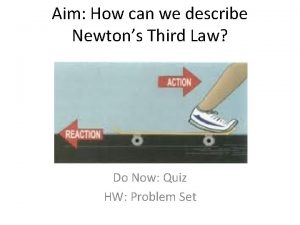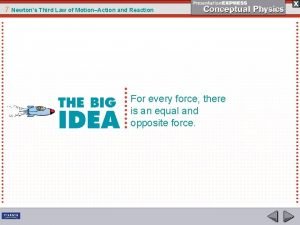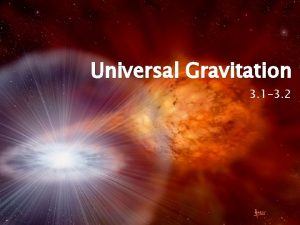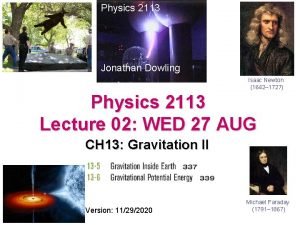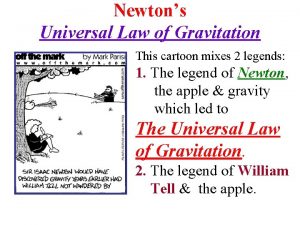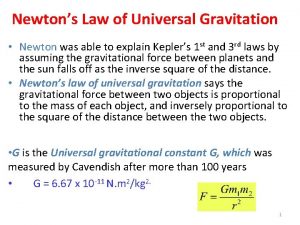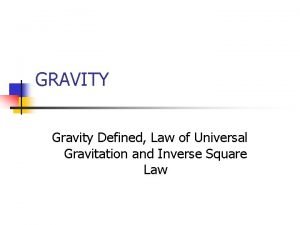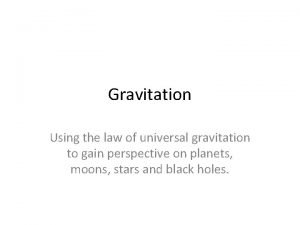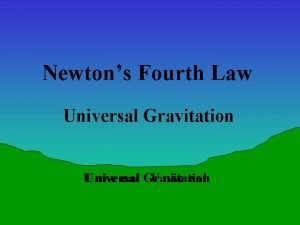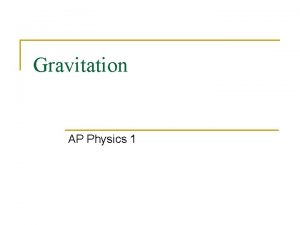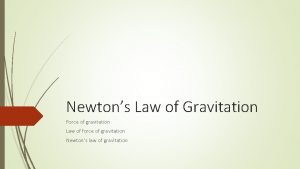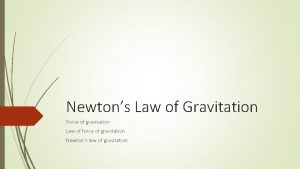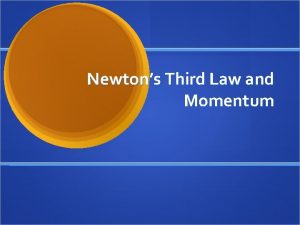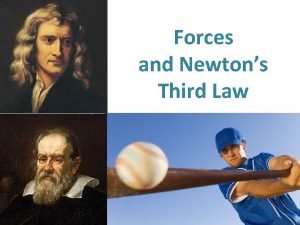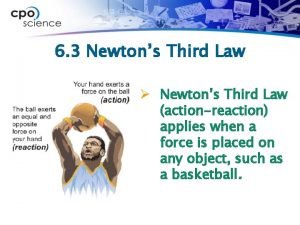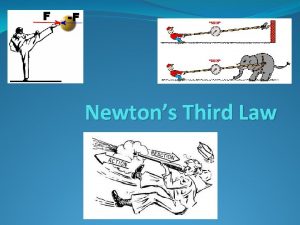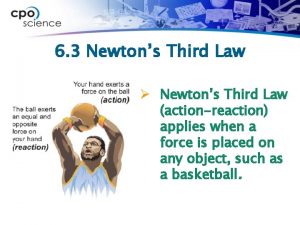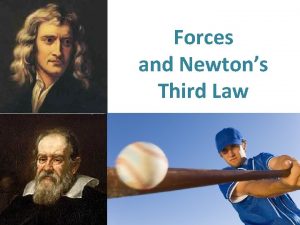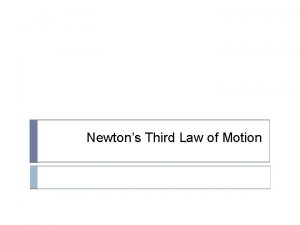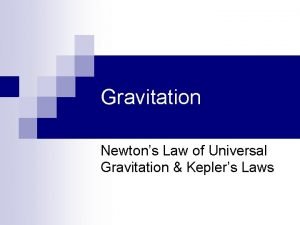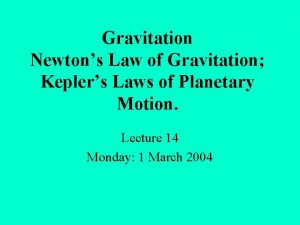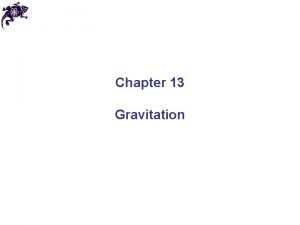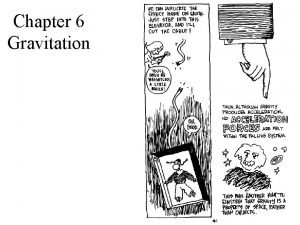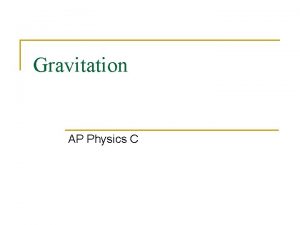Newtons Law of Gravitation Aim Newtons Third Law


















- Slides: 18

Newton’s Law of Gravitation Aim:

Newton’s Third Law “For every action there is an EQUAL and OPPOSITE reaction. • This law focuses on action/reaction pairs (forces) • They NEVER cancel out All you do is SWITCH the wording! • PERSON on WALL • WALL on PERSON

This figure shows the force during a collision between a truck and a train. You can clearly see the forces are EQUAL and OPPOSITE. To help you understand the law better, look at this situation from the point of view of Newton’s Second Law. There is a balance between the mass and acceleration. One object usually has a LARGE MASS and a SMALL ACCELERATION, while the other has a SMALL MASS (comparatively) and a LARGE ACCELERATION.

Examples Action: HAMMER HITS NAIL Reaction: NAIL HITS HAMMER Action: Earth pulls on YOU Reaction: YOU pull on the earth

Newton’s Law of Gravitation What causes YOU to be pulled down? THE EARTH…. or more specifically…the EARTH’S MASS. Anything that has MASS has a gravitational pull towards it. What the proportionality above is saying is that for there to be a FORCE DUE TO GRAVITY on something there must be at least 2 masses involved, where one is larger than the other.

As you move AWAY from the earth, your DISTANCE increases and your FORCE DUE TO GRAVITY decrease. This is a special INVERSE relationship called an Inverse-Square. The “r” stands for SEPARATION DISTANCE and is the distance between the CENTERS OF MASS of the 2 objects. We us the symbol “r” as it symbolizes the radius. Gravitation is closely related to circular motion as you will discover later.

– Putting it all together

Try this! Let’s set the 2 equations equal to each other since they BOTH represent your weight or force due to gravity SOLVE FOR g!

What is Gravity? • Attractive force between two objects with mass • Strength of attraction depends on: – Mass of each object (in kilograms) – Distance between the objects (in meters) – Gravitational Constant (G = 6. 67 x 10 -11 N∙m 2/kg 2)

Example #1 30 00 4 x 105 kg m 6 x 105 kg Fg = 1. 78 x 10 -6 N

Gravitational Proportions • The force of gravity is DIRECTLY proportional to mass. • What is the effect on a gravitational system if: • one mass is doubled Base Case

Gravitational Proportions • The force of gravity is DIRECTLY proportional to mass. • What is the effect on a gravitational system if: • both masses are doubled

Gravitational Proportions • The force of gravity is DIRECTLY proportional to mass. • What is the effect on a gravitational system if: • one mass is reduced by 1/3

Gravitational Proportions • The force of gravity is INVERSELY proportional to the square of distance. • What is the effect on a gravitational system if: • the distance between masses is doubled

Gravitational Proportions • The force of gravity is INVERSELY proportional to the square of distance. • What is the effect on a gravitational system if: • the distance between masses is tripled

Gravitational Proportions • The force of gravity is INVERSELY proportional to the square of distance. • What is the effect on a gravitational system if: • the distance between masses is halved

Gravitational Fields • Objects with MASS produce gravitational fields • Field lines point inward from ALL DIRECTIONS

End of 2. 2. 2 - PRACTICE
 Describe newtons third law
Describe newtons third law Newtons third law of thermodynamics
Newtons third law of thermodynamics Third
Third Newtons third law of motion
Newtons third law of motion Newton's third law
Newton's third law Equal and opposite reaction
Equal and opposite reaction Newton's first law and second law and third law
Newton's first law and second law and third law Newton's first law
Newton's first law Explain newton’s universal law of attraction/gravitation.
Explain newton’s universal law of attraction/gravitation. Gauss law in gravitation
Gauss law in gravitation Universal gravity constant
Universal gravity constant Newtons laws of gravity
Newtons laws of gravity Newton's law of gravitation
Newton's law of gravitation Universal gravitation law
Universal gravitation law Angular acceleration formula in terms of radius
Angular acceleration formula in terms of radius Universal gravitation law
Universal gravitation law Universal law of gravitation calculator
Universal law of gravitation calculator Newtons 4th law
Newtons 4th law Newton's universal law of gravitation ap physics 1
Newton's universal law of gravitation ap physics 1
